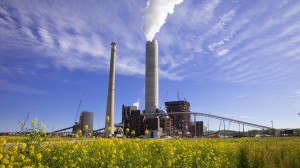 As the nation’s electric industry prepares for upwards of 90 gigawatts of coal-fired power plants to be retired in the near future, careful planning is required for these facilities to be decommissioned safely, successfully and cost-effectively. Many of those slated for retirement are part of larger, multi-unit facilities where some units will continue operating during the decommissioning efforts. These partial plant decommissioning projects pose a unique set of challenges and require a very different strategic approach.
As the nation’s electric industry prepares for upwards of 90 gigawatts of coal-fired power plants to be retired in the near future, careful planning is required for these facilities to be decommissioned safely, successfully and cost-effectively. Many of those slated for retirement are part of larger, multi-unit facilities where some units will continue operating during the decommissioning efforts. These partial plant decommissioning projects pose a unique set of challenges and require a very different strategic approach.
Decommissioning Options Abound
The options for decommissioning retired coal-fired power plants depend on the level of demolition at a specific site, which in turn affects future use of the facilities and ongoing costs. These decommissioning options can generally be grouped into three main categories: mothballing, with the intent to restart; retire-in-place, with minimal demolition but no provisions for future restart; and full demolition, with all equipment and facilities removed so the site can be repurposed.
The Benefits of Selecting Retire-in-Place
The retire-in-place option is typically the most attractive solution for facilities where additional units will remain online and operational. This minimizes impacts to adjacent operating units and avoids costly selective demolition activities. With a typical fullplant retirement, the retire-in-place route quickly becomes more expensive than a simple full plant demolition because of the ongoing costs associated with site security and upkeep, insurance and taxes. But when evaluating a site with only partial retirements, these ongoing costs will be incurred for the remaining units, so minimizing selective demolition, which can be quite costly, becomes the main economic driver.
Challenges and Necessary Modifications
On the flip side, the retire-in-place scenario presents a unique set of engineering challenges. Many shared and interconnected facilities will need to be addressed and separated, but these modifications go beyond physically separating units to also include modifications to distributed control systems, fire protection and freeze protection.
In most cases, areas in and around these units will no longer have a source of building heat, so some piping may need to be heat traced or have other freeze protection measures implemented. The retired units will also still need fire protection in some areas. Reducing and removing oils and other flammable materials from the units is often an effective way to reduce potential fire threats.
Standard Retire-in-Place Tasks
There are several key tasks required for a typical retire-in-place decommissioning strategy:
- De-energize and Disconnect: The first step is to de-energize and disconnect the units from the active components of the plant. Once the units have been properly de-energized, all oils, chemicals and other potential hazards should be drained and removed.
- Evaluate and Reconfigure Coal Handling System: From there, the coal handling system will need to be evaluated for modification and reconfirmation, as well as removing all remaining coal and ash from these retired units. Areas of the tripper room floor may also need blanking plates to prevent coal from being sent to the coal bins for the retired units.
- Other Physical Modifications: Other activities include placing a cap on the stacks to minimize deterioration over time, and evaluating the cooling towers for potential demolition, depending on their condition. It may be possible to defer the demolition cost until a later date, but it does create a risk of deterioration and collapse if they remain.
- DCS Modifications: Beyond these physical changes, modifications to the distributed control systems are necessary to prevent equipment from attempting to send coal, chemicals or other consumables to the retired units.
- Reduce Auxiliary Loads: As part of any plant modification, reducing the auxiliary loads demanded by retired units can help prevent a negative effect on the performance of the remaining units. These gains typically come from reducing the lighting and heating load in the retired units, but there may be other opportunities available depending on the particular site, including modifying the operating units or balance-of-plant services, such as auxiliary steam, to place them closer to the operating units, ultimately reducing losses.
- Freeze Protection Modifications: Finally, thorough modifications to the fire and freeze protection will need to be implemented, and access to nonessential areas should be restricted.
Simply Walking Away Isn’t an Option
Planning to retire a single unit that is part of a larger multi-unit facility isn’t as simple as locking up and walking away, particularly when multiple owners are involved. The process needs to be carefully planned to reduce risks and minimize upfront costs while minimizing impact on the operational units and limiting the potential for increased future demolition costs. Each facility owner will need to evaluate plant- and owner-specific characteristics and criteria to develop a successful approach to unit retirement.
Successful decommissioning requires innovative solutions to help make the retirement process more efficient. If you’re one of the many utilities faced with retiring a power plant, let us help. Comment below, or reach out on LinkedIn
Jeff Kopp is a manager in the Business Consulting Group at Burns & McDonnell. He specializes in consulting services for power generation and transmission and distribution projects.
